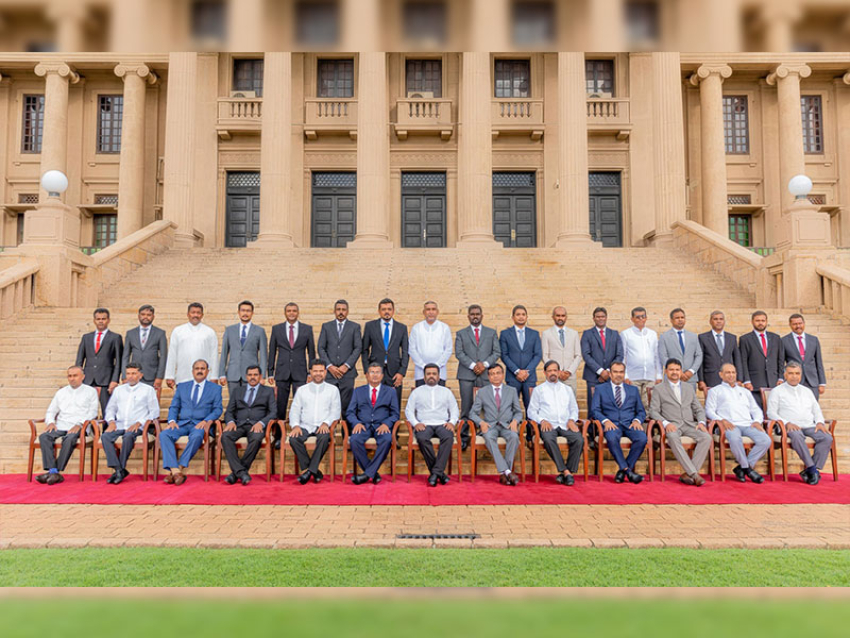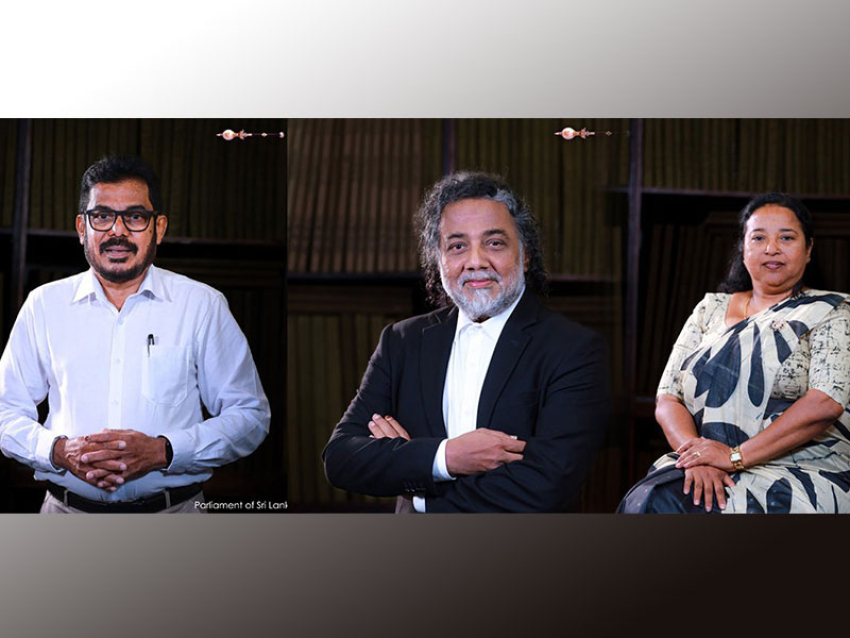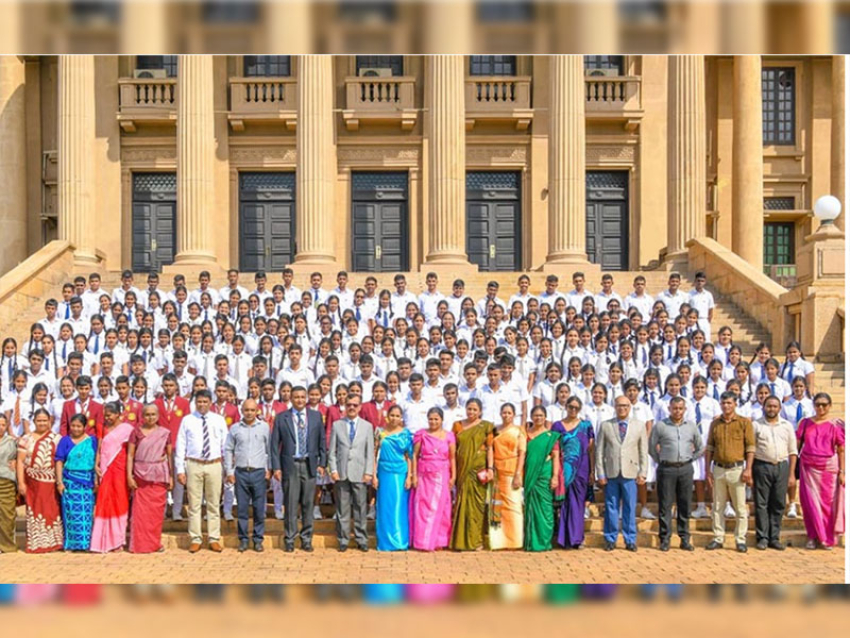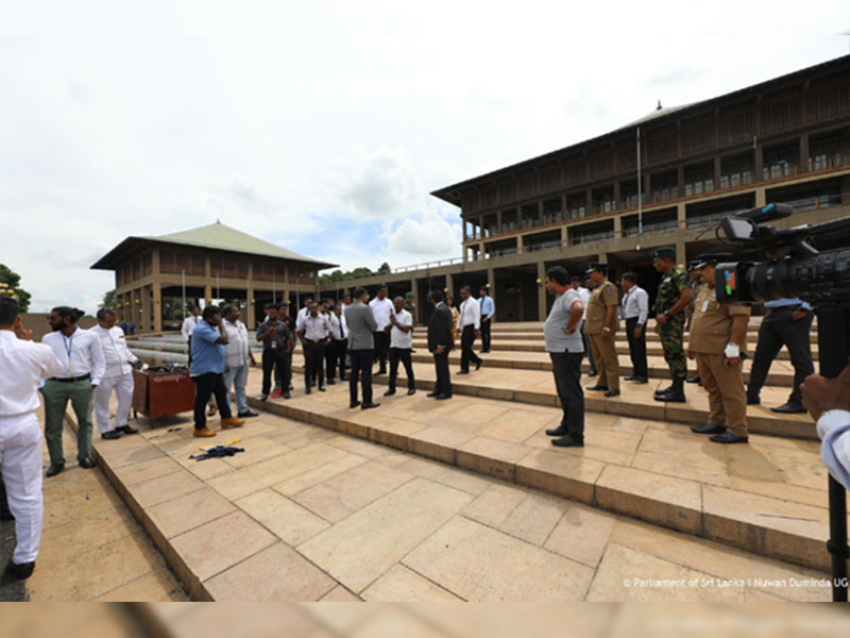“The moving finger writes; and having writ, moves on; ......
- Rubaiyat of Omar Khayyam
Persian poet. (1122)
New Year is mankind’s oldest festival. In the early dawn of human civilization, in terms of intelligence, man was not that much advanced from the other fellow species that shared the Earth with him.
Before we approach our own sacred, indigenous New Year rituals, let us take a look at an amazing instance from the Far East. In some homes in Japan, it is said, that the image of a God is ‘enthroned’ in the kitchen. At the end of the year, when a New Year is about to dawn, this ‘Kitchen God’ is fed with some gluey and gummy sweets, and taken out. Next, he is ritually immersed in a stream. What amazes us is the ‘logic’, which supports this exotic rite. The people believed, that when the God is fed with gluey, sticky and gummy sweets, back in heaven, he will not be able to open his mouth, to say anything bad about the house that gave him shelter in the past year.
With that let us turn to our own rites.
In the initial decades of the 20th century, in the region of my birth, in the not – so – deep South, Sinhala New Year was a celebration of near epic proportions. The village I ‘hail’ from is Unawatuna – with mythological links to the Ramayana, the world reputed Indian classic.
The rural community gets ready for the annual events, months ahead of the day. Astrologers travel around the village informing the auspicious times for the New Year rituals.
In the villages, it was very much a children’s festival. The village urchins instinctively knew the approach of the New Year.
There were natural communications systems that heralded the arrival of the New Year. The blood red buds of the ‘erabadu’ flower proclaimed that the New Year was around the corner. Of this sight- and-sound natural announcement of the New Year’s visit, the audio segment was provided by the ‘koha’ – the Indian cuckoo. In other words, the sweet warbling of this migratory bird, added a compelling soundtrack, to this natural ‘visual.’
Hence, the total Sinhala New Year Festival is a unique eco pageant.
As much as the primitive New year, the indigenous Sinhala New Year Festival too, has two main concerns.
On the Old Year’s Day, (Parana Avurudda) the dominant sentiment is sadness. People refrain from lighting their hearths. Fasting is mandatory. This is the symbolic equivalent of the ‘wailing and weeping of the ancients’ at the Death of the God of Nature.
This period of sorrowing is known to Sri Lankans as ‘Nonagathe’ (The neutral hour). This was the time, when the God of Nature was between death and life (neutral).
The Sinhala Buddhists, perform religious rituals at this time. This is similar to the earnest prayers offered by the primitives, to bring about the reincarnation of their Dead God. As an outcome of the merits, transferred by the people during the ‘Nonagathe’, the neutral hour – Lo and behold, the Dead God of Nature is reborn.
On New Year’s day, (Aluth Avurudda) people rejoice, and begin a fresh cycle of life, along with the newly risen God.
It is in this phase, that many of the outstanding New Year rituals take place. The major item is the partaking of the New Year meal.
In most rural regions of Sri Lanka, the New Year meal is an astonishing display of culinary dexterity.
As a child, I watched with uninhibited concentration, the process of the artificially ripening of green banana.
They dig a hole in the ground and place the banana cluster in it. The hole is covered, leaving a narrow opening, through which smoke is sent in, to the banana cluster.
The villagers describe this process as ‘dum pimbeema” (blowing in the smoke). In a few hours, the bananas are ripe and fit for consumption. To a child, at that time, it may have seemed a great mechanical achievement. It is during the New Year season, that one can really discover the extensive range of the indigenous culinary products.
In early times, the collective festive feast was served on a large mat spread on the floor. Chairs and tables for such occasions came into vogue, fairly recently in the country.
Varieties of rice preparations, fish in various dishes, pickles to tickle the taste buds, curry delights tempted those who sat around partaking of the New Year feast.
But, there is one item, about which I cannot help but wax eloquent. It is of course Kiribath (milk rice). When you name the predominant items in a Sri Lankan Festive feast, Kiribath receives unquestioned prominence. In other words milk rice takes the cake.
In the culinary psyche of all races, a special dish is enthroned as their mass delight for all seasons. The favourite item may not necessarily be a Five Star goodie, that could swoon elite gourmet foodies. But, it could very well be humble, homely simple or just plain – like Sri Lanka’s Kiribath – milk rice.
Here in Sri Lanka, the ever revered racial repast is of course Kiribath. Fast on its heels, comes the perennial favourite, curd – treacle combination. No auspicious event, domestic or public is complete unless accompanied by Kiribath. When Sri Lankan New Year comes round Kiribath comes into its glorious best. Every household is ready to greet the New Year invariably with this prime dish.
The ‘text book’ side preparation for Kiribath is, of course, sambol, with a generous addition of maldive fish to enliven its appeal. Its smart chilli flavour sharpens the built in mildness of Kiribath, transforming it into a lingering pungency. Kiribath is associated at times with seeni sambol, elevating it into a well-rounded meal. There are other exotic touches that could impart a peculiar dash to the Kiribath dish. The culinary classic of the deep South – embulthial – a fish preparation – is foremost among them.
Kiribath has a whole retinue of taste refiners. When we were children, my mother used to fix us a dried fish dish, with liberal pinches of chilli and onion, to make us experience an unusually flavoured milk rice. Pickles too accompany Kiribath enticingly. If your taste buds have sweeter inclinations, you could try your Kiribath with a nugget of jaggery. (rock candy)
While on the theme of Sinhala New Year, I dwelt somewhat lingeringly on the New Year cuisine. There is a specific rationale for this.
In the earlier day, about 50 – 60 years ago, those family members who were employed in distant places, were brought home for the New Year by a series of compulsions.
One was the need to meet and great friends and relations in their village. Another was their nostalgic yearning for the dishes mother prepared for them when they were young and at home.
Though the prime dish is Kiribath, the New Year spread contains a surprising array of food items. Kevum and kokis, would invariably be there. Regional food varieties are bewilderingly profuse. I am keen that an individual or group should be dedicated to list these vanishing dishes.
The new cycle of life, initiated with the re – incarnation of the God of Nature, starts with the offering of food to an invited visitor. He takes his meal and begins a transaction too. He gives the people at home, gifts, usually made up of cash notes and coins, wrapped in betel leaf. Auspicious times are allocated to start the professional lives.
Children are asked to read a book. Bathing at an auspicious time is part of the ritual practices. Those who have to go back to their working places, set out at the ritually directed moment.
In this traditional ethno religious celebration, a crucial preoccupation is the adoration of religious persons and family adults. Past errors are forgiven and forgotten. Reconciliations brighten lives; affections are strengthened.
Religious shrines assume a central role in folk life. The temple bell indicated the right moments for the rituals.
Today, the media have taken over this role. Print media, Television, film and even smart – phones, have taken over the time keeping role. What is profoundly disturbing is the (almost) irrevocable fading away of the rites / rituals and the wholesome spirit of the Sinhala New Year.
When people adhered to the essential rites and rituals, the whole nation, the total community was brought together at one moment.
Hearths are rekindled together, nationwide. When the hour for the initial partaking of the New Year meal arrives, all start their formal New Year meal at one and the same time. This led to an imperceptible spiritual unity.
The total community participated in games, entertainments and promoting goodwill. Games were numerous, both domestic and communal. Recitations peculiar to the games nourished the pleasure of the New Year. Communed games, somewhat similar to tug – of – war, generated a wholesome spirit, that disciplined the people to accept both defeat and victory, with an even mind – and of course with joy.
All these New Year traditions, are fast eroding. We may not be able to call back that by gone era. The universalized global cultural practice is inescapable. The survival of an individual culture, will begin to prove almost an impossibility.
But, with concerned earnestness a national effort should be made, to record those fading cultural values.
With advanced technologies of media, we must systematically create authentic records of those through multi – media mechanisms.
Those who will arrive in years to come, will deem such effects – as valued treasures. New Year should be lived and must be preserved.
r.




















